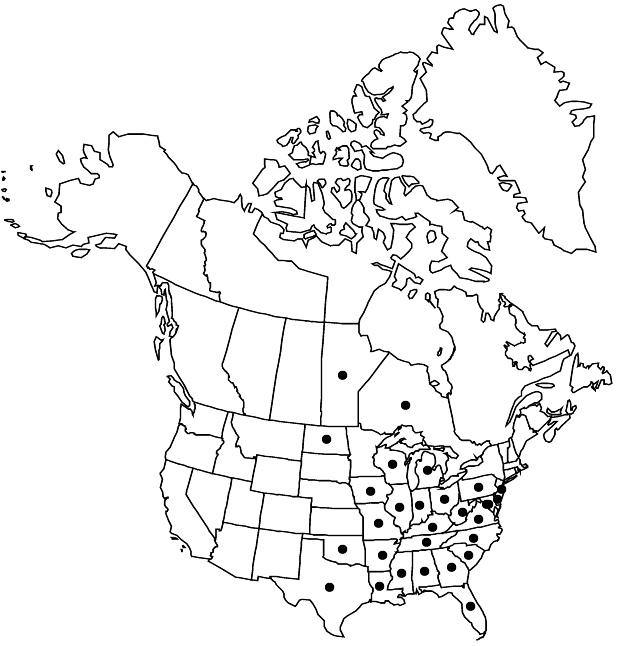Lysimachia lanceolata
Fl. Carol., 92. 1788 ,.
Stems erect, simple or sometimes branched distally, 1–10 dm, glabrous (rarely sparsely stipitate-glandular or pubescent near nodes); rhizomes slender; bulblets absent. Leaves opposite or whorled near stem apex, dimorphic; distal petioles absent or 0.1–0.7 cm, proximal 0.3–2(–3.5) cm, ciliate proximally, cilia 0.3–1.2(–2) mm; distal blades narrowly elliptic to elliptic-lanceolate or linear-lanceolate, proximal blades broadly elliptic or lanceolate, distal 3–18 × 0.2–1.6 cm, proximal 2–5 × 0.6–1.8 cm, bases of distal leaves cuneate, decurrent, bases of proximal leaves rounded to obtuse or cuneate, decurrent, margins entire (rarely serrulate), plane, ciliolate proximally, apex rounded to acute or acuminate, surfaces not punctate, glabrous; venation pinnate-arcuate. Inflorescences axillary, solitary flowers. Pedicels 1–5 cm, glabrous to sparsely stipitate-glandular (rarely pubescent). Flowers: sepals 5, calyx not streaked, 3.5–8(–10) mm, glabrous or stipitate-glandular, lobes narrowly lanceolate to ovate, margins thin; petals 5, corolla yellow, sometimes with slightly reddish base, not streaked, rotate, 4–10 mm, lobes with margins slightly erose apically, apex apiculate or mucronate, sparsely stipitate-glandular adaxially; filaments distinct or nearly so, shorter than corolla; staminodes 0.7–1 mm. Capsules 2–5 mm, usually not punctate, glabrous or slightly stipitate-glandular distally. 2n = 34.
Phenology: Flowering summer–fall.
Habitat: Moist roadsides, mixed and deciduous forests, edges of wet meadows, lake shores, swales in open prairie, rocky sites
Elevation: 0-1600 m
Distribution

Man., Ont., Ala., Ark., Del., D.C., Fla., Ga., Ill., Ind., Iowa, Ky., La., Md., Mich., Miss., Mo., N.J., N.C., N.Dak., Ohio, Okla., Pa., S.C., Tenn., Tex., Va., W.Va., Wis.
Discussion
Reports of Lysimachia lanceolata from Connecticut and Maine were based on specimens of L. hybrida initially identified as L. lanceolata subsp. hybrida.
V. J. Coffey and S. B. Jones (1980), using garden studies, concluded that this species differed from the similar Lysimachia hybrida in some features, mostly dealing with leaf shape and amount of marginal cilia. Herbarium specimens examined by me showed much more overlap in these characters; clearly these two species need further work. Coffey and Jones also reported, interestingly, that L. lanceolata was less susceptible to aphid infestation than L. hybrida.
Selected References
None.